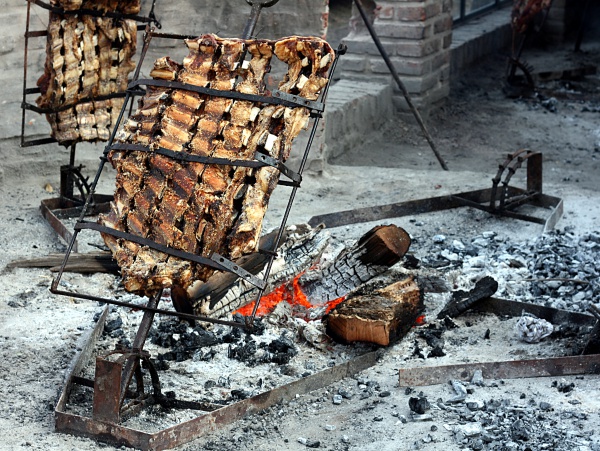Facts About Asado
Asado is more than just a barbecue in South America; it’s a cherished tradition and social event celebrated across the region. Imagine friends and family gathering around a flaming grill, or parrilla, sizzling with an assortment of meats like beef, pork, chicken, chorizo, and morcilla. The air is filled with the mouthwatering aroma of grilling meat, often complemented by the rich scent of red wine, fresh salads, and iconic condiments like chimichurri or salsa criolla. The centerpiece of the occasion? The asador or parrillero, the skilled individual in charge of the grill.
The roots of asado trace back to the gauchos of Argentina, who had a particular fondness for roasted beef. Their method involved slow-roasting meat over an open fire, often using wood from the quebracho tree, imparting the meat with a distinct, smoky flavor. A typical asado spread includes various cuts of meat and organs, complemented by salads, grilled vegetables, and beverages like beer and wine. And let's not forget the desserts, usually simple yet delightful, such as fresh fruit.
Asado isn't confined to Argentina alone. Each South American country has its own interpretation of this tradition. In Chile, Brazil, Mexico, Uruguay, and Paraguay, unique cooking methods and side dishes reflect local flavors and customs. Some regions even have alternative cooking styles like asado al disco or asado al horno de barro, which use different tools or ovens to achieve that perfect blend of flavor and tenderness.
It's worth noting that South American asado is quite distinct from similarly named dishes around the world. For instance, in the Philippines, asado refers to braised meat dishes, while in Portugal, assado denotes roasted fish served with sausages and bacon. In Goa, the term assad, derived from the Portuguese assado, refers to roast beef.

 Bolivia
Bolivia